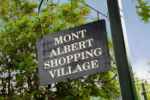Historical
In 1895 a market was opened near Box Hill
railway station, which improved Box Hill's commercial importance. Box Hill was also the entry point for a tramline to Doncaster,
which ran from 1889 to 1896. The 1890s also saw the opening of a gas works, several brickworks and a private girls' high school.
A site was bought by the Council from a brick works company in 1905, including a deep quarry from which clay
had been taken. It became Surrey Park and the hole the Surrey Dive, a popular swimming hole,
now an RC boat club.
The brickworks closed in 1988, and the quarry was filled in slowly. Much of the original tamping and grinding
machines are still in place, though sadly smashed and graffitied by mindless fools.
Surrey Park Swimming Club
In 1905 the newly formed Surrey Park
Swimming Club petitioned the Council to purchase the former quarry site as a reserve. Surrey Dive became an official swimming
pool with bathing sheds, springboards, and eventually a 10-lane course, making the Dive the first Olympic standard pool in
Australia.
A ramp, springboard, a bathing shed and life buoys were purchased by Council. For many years Surrey Dive was
the location of swimming carnivals watched by crowds of up to 3,000 people.
Swimming – for fun, fitness, or competition - has long been a popular activity amongst local residents.
In the days before public swimming pools, the most well known swimming hole was the Surrey Dive.
The sheer cliffs and extraordinary depth of over 30 m attracted only the most experienced swimmers. The Surrey
Park Swimming Club hosted regular swimming carnivals, the first of which was held in 1907 and featured a young Frank Beaurepaire,
who won the one mile championship in record time.
After drought conditions forced the closure of Surrey Dive in 1967-68, the once popular swimming hole was
converted into an ornamental lake.
While the experienced swimmers challenged themselves and others in Surrey Dive, there were few facilities
for the young or inexperienced - despite repeated requests from the swimming club for improvements.
In the 1930s Ivy Weber, the first woman elected to Victorian Parliament and an advocate for health and fitness,
organised a State Government grant to assist Council to build a new swimming pool at Box Hill.
Box Hill City Baths
These were designed by City Engineer
Frederick Kerr and featured tiles from the Australian Tesselated Tile Company, opened on 28 January 1939 in conjunction with
the Australian Swimming Championships.
35,000 people went through the turnstiles in the first season and local schools were eager to use the Baths
for swimming carnivals. The Surrey Park Swimming Club continued to use the facilities for training and competition and conducted
learn to swim classes. Numbers peaked in the 1959-60 season when 105,000 came to the Baths.
The Baths are adjacent to the Dive, and are now a heated outdoor facility, part of the Aqualink complex, currently
being reconstructed and modernized, with a planned completion date of November 2013.

